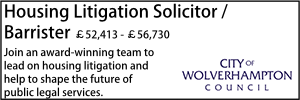Gang injunctions and ASBIs: the standard of proof
- Details
The Supreme Court has confirmed the standard of proof to be applied for gang and anti-social behaviour injunctions. Kuljit Bhogal KC, Andrew Lane, Sarah Salmon and Jack Barber consider the judgment’s impact and implications.
On 30-31 January 2023, the Supreme Court heard an appeal on whether Part 4 of the Policing and Crime Act 2009 (“2009 Act”) is incompatible with Article 6 of the European Convention on Human Rights (ECHR”).
The judgment in Jones v Birmingham City Council and the Secretary of State for the Home Department [2023] UKSC 27 not only deals with applications for injunctions to prevent gang-related violence or drug dealing under the 2009 Act but also confirmed the test to be applied in applications under Part 1 of the Anti-Social Behaviour Crime and Policing Act 2014 (“2014 Act”). The judgment is relevant to local authorities, police forces, anti-social behaviour specialists and social housing providers alike as well, of course, to (prospective) defendants.
Background
In 2016, HHJ MacKenna granted an interim injunction under both the 2009 Act and 2014 Act against Mr Jones, one of 18 defendants, on account of his alleged involvement in gang-related activities (and, in particular, of involvement with the ‘Guns and Money Gang’.)
In 2017, HHJ Wall found at trial on the balance of probabilities that Mr Jones was affiliated with the Guns and Money Gang, and that he had engaged in or assisted with gang-related drug dealing. She granted a gang injunction with a power of arrest (i.e., she did not consider the 2014 Act application). That order prohibited Mr Jones from entering into a large part of central Birmingham.
Before this judgment, the matter had been transferred to the High Court to deal with an application to the effect that section 34(2) of the 2009 Act and section 1(2) of the 2014 Act were incompatible with Article 6 of the European Convention on Human Rights. Burton J held that the proceedings were not in respect of a criminal charge and did not require the application of the criminal standard of proof. The Appellant appealed this order to the Court of Appeal, the Court dismissing the appeal upon finding that the proceedings did not involve a criminal charge with Article 6(1) of the ECHR, and the standard of proof for section 34(2)/section 1(2) purposes, i.e., the balance of probabilities, was compatible with Article 6. Sir Brian Leveson P’s judgment concluded:
“59. Parliament was entitled to address the very real social harm which gangs and other anti-social behaviour have been inflicting on society in the way in which this legislation seeks to do. Built in to each legislative scheme are safeguards intended to address the impact on individuals. In my judgment, the legislation does not trigger the bringing of a criminal charge for the purposes of Article 6 of the ECHR and neither is the requirement that the court address the issues on the balance of probability a breach of Article 6.”
The Supreme Court
The Supreme Court considered the following issues:
- Following McCann v Crown Court at Manchester [2001] 1 WLR 1084, the appropriate standard of proof in proceedings brought on the basis of allegations of fact that a person has been engaging, assisting or encouraging criminal conduct for the purposes of imposing serious restrictions on their freedom of movement, association and expression requires proof to the criminal standard to be fair under Article 6(1) ECHR, even if the proceedings are civil proceedings; and,
- Alternatively, fairness requires the conduct to be proven to the criminal standard.
Lord Lloyd-Jones delivered the sole judgment in Jones and the Supreme Court unanimously dismissed Mr Jones’ appeal. It held at [66]:
- Article 6(1) of the ECHR, as given effect by the Human Rights Act 1998, does not require the criminal standard of proof to be satisfied in respect of (a) proof that a person has engaged in or has encouraged or assisted gang-related violence or gang-related drug dealing activity within section 34(2) of the 2009 Act or (b) proof that a person has engaged or threatens to engage in anti-social behaviour within section 1(1) of the 2014 Act; and,
- Under Part 4 of the 2009 Act and Part 1 of the 2014 Act Parliament has devised statutory schemes which conform with the requirements of a fair hearing under article 6 of the ECHR.
The Court recognised that Parliament had “devised statutory schemes” and made its own assessment of procedural fairness so as to conform with the fair hearing requirements ensure fairness.
There is no heightened civil standard
The court has confirmed the test under the 2009 Act and the 2014 Act (see the judgment at [58]-[65]). The test, in relation to whether the conduct in question took place, is the civil standard. The Court has made it clear at [60] “there is no such thing as a heightened civil standard”.
In confirming the test to be applied, the Court considered the legislative aims of, in particular, the 2009 Act. The scheme was introduced with the aim of dealing with gangs following the decision in Birmingham City Council v Shafi [2008] EWCA Civ 1186; [2009] 1 WLR 1961 and Parliament concluded that a change in the standard of proof was necessary to tackle such mischief. The Court also highlighted the procedural safeguards within the 2009 Act and 2014 Act which, it held, secured the fairness of any trial.
Further, the Court did not consider that McCann was authority for the proposition that anti-social behaviour within section 1(1)(a) of the 1998 Act was required to be proved to the criminal standard. Whilst the relevant provisions of the 1998 Act have since been repealed, it is interesting that the Court has taken the view McCann was wrong if any of the judicial opinions therein did in fact impose a standard beyond the balance of probabilities to be applied to applications for anti-social behaviour orders under that Act.
Implications
The Supreme Court’s decision, is important for police forces, local authorities and social housing providers in particular in informing how to formulate effective legal responses to gang-related behaviour across the country. It also has broader implications as it confirms the test to be applied under the 2014 Act. It is, therefore, of wider relevance to public law, housing law and local government practitioners.
The judgment means that those applying for injunctions such as those under the 2009 and 2014 Act can now be confident as to the hurdle they need to surmount to prove their case. It should put to bed arguments of a heightened civil standard in such gang or anti-social behaviour cases in the county court even where behaviour of a criminal nature is (in the former instances, necessarily) relied upon. It will also hopefully give some comfort to judges dealing with such cases that they do not need to go beyond the balance of probabilities in order to make findings.
It does not mean, however, that strong and cogent evidence is not required to prove the case. As the Supreme Court noted at [60] “it is a matter of common sense that the more unlikely it is that an event has occurred, the more cogent the evidence will have to be in order to establish that it did”. Applicants should not therefore be complacent in putting their cases together but at least, finally, there is some certainty as to the standard of proof to be applied.
Kuljit Bhogal KC, Andrew Lane, Sarah Salmon and Jack Barber are barristers at Cornerstone Barristers.
The Public Law and Housing Teams at Cornerstone Barristers have extensive experience of applications under Part 4 of the Policing and Crime Act 2009 and Part 1 of the Anti-social Behaviour, Crime and Policing Act 2014. Kuljit, Andrew, Sarah and Jack have all recently been instructed on applications for gang injunctions against numerous individual respondents.
Cornerstone on Gangs is also due to be released next year by Bloomsbury co-authored by Sarah Salmon and Jack Barber.
15-01-2026 11:00 am
20-01-2026 5:00 pm
























